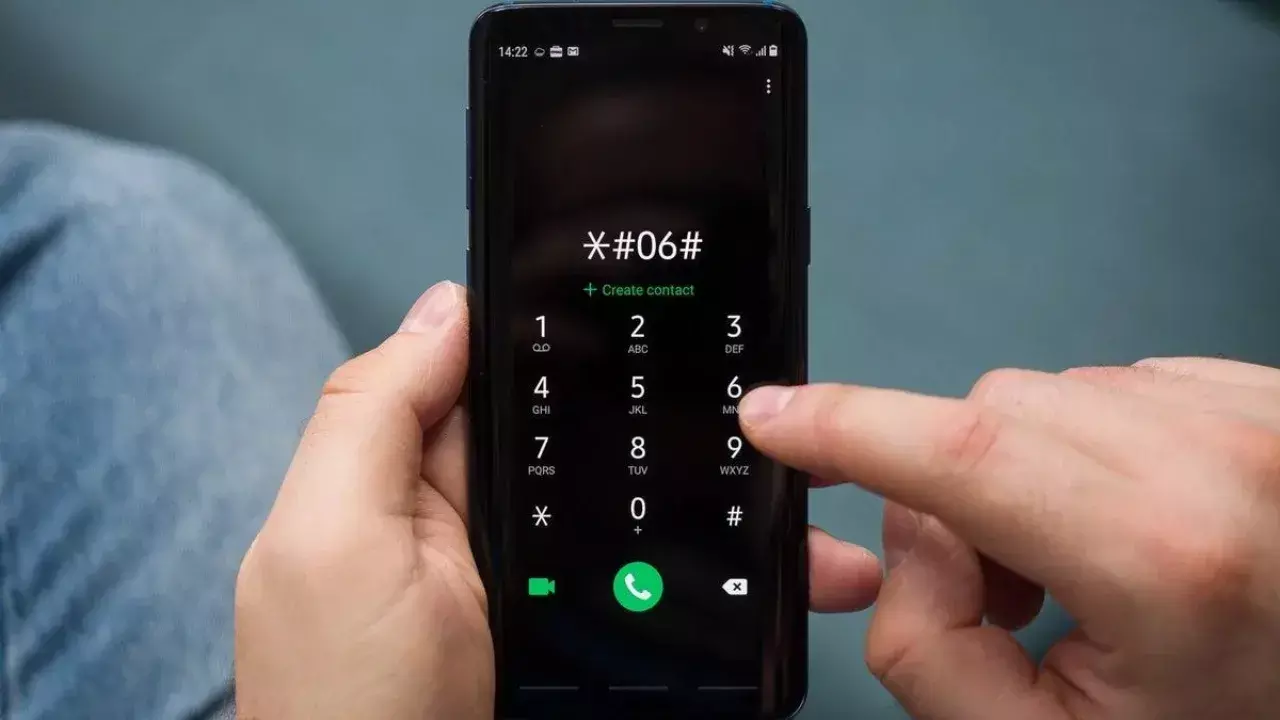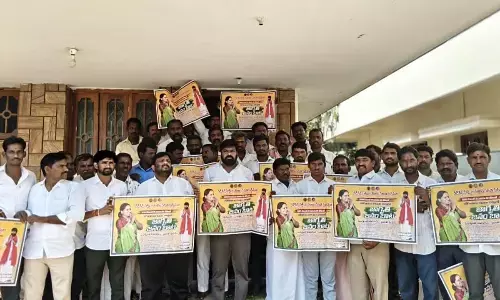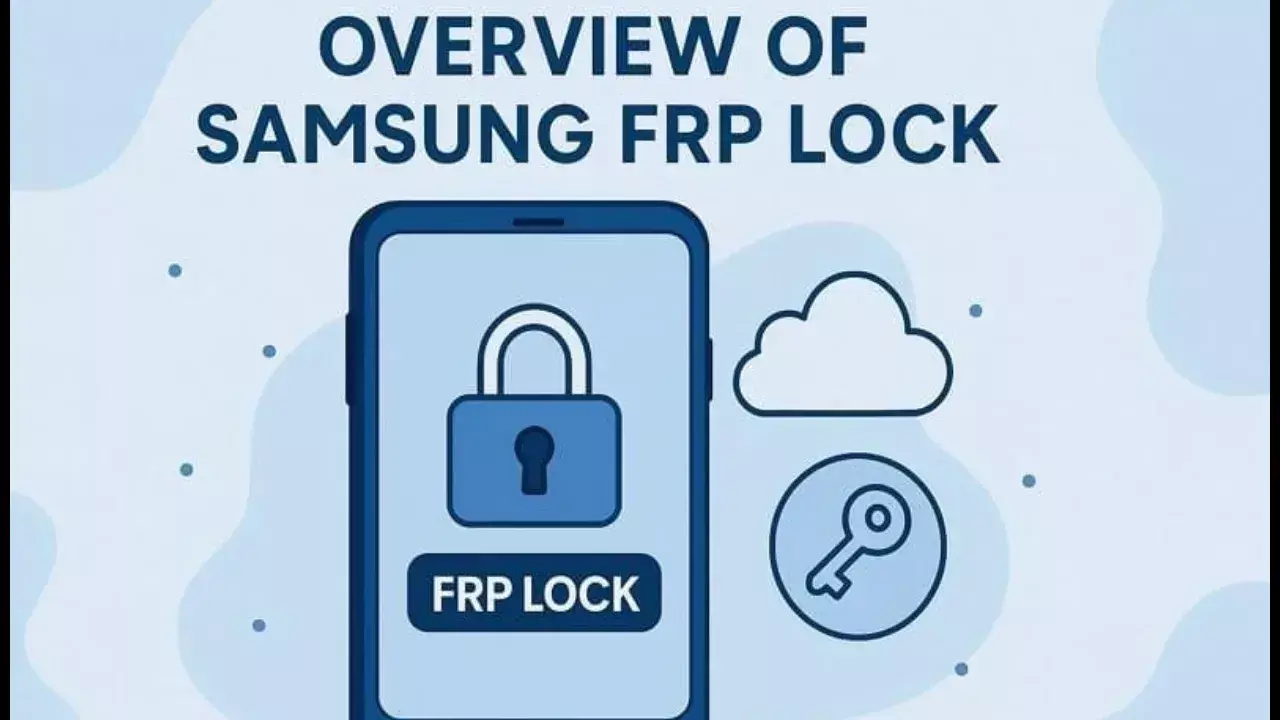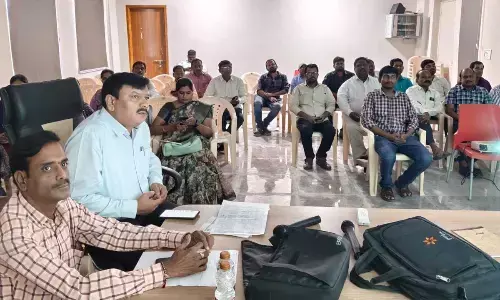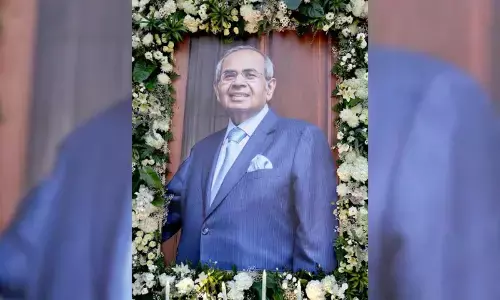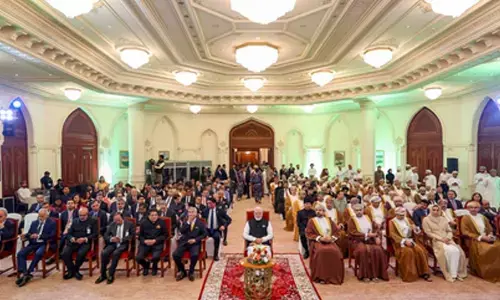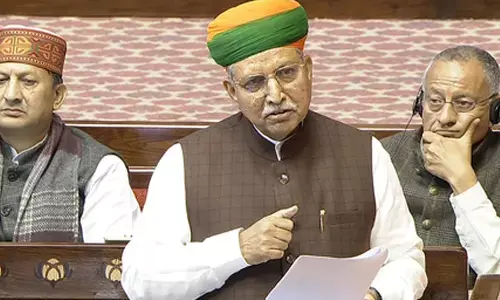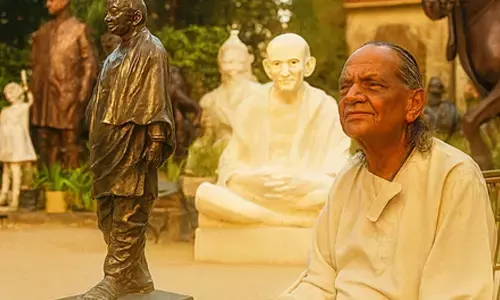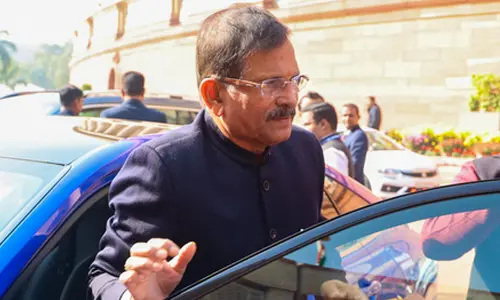Modi proves man of moment

Modi proves man of moment, What made Modi’s routine more fascinating is the fact that he fasted through four days living only on warm water, not even lemon to add, which is normally done.
For one who has over the years observed Prime Ministers and their foreign sojourns, particularly to the United Nations and the United States, that of Prime Minister Narendra Modi appears outstanding for its rigorous, whirlwind nature, and greater clarity while trying to take in just everything through two scores of engagements, and all of it under media glare.
As a majority of nations do, with the exception of Rajiv Gandhi, India has sent mostly old politicians to the USA. Modi is not exactly young as he turned 64 during his visit. But for him, to undertake such a punishing routine seemed in keeping with his nature and style. It is a reminder of his recent election campaign conducted over several months, long before he was formally anointed the candidate for the country’s top job by his party. The impact is still reverberating in the global arena that he has made his own in the last few weeks.
What made Modi’s routine more fascinating is the fact that he fasted through four days living only on warm water, not even lemon to add, which is normally done. If he was fasting for Navaratra festival, this was not adequately projected by his media planners and hence, the media. And since he was abroad, it remained an enigma to the Americans.
Living on water alone and squeezing in such a large number of engagements, including energy-sapping speeches was really remarkable. But Modi is human like us all and the fatigue showed in his appearance, if not performance. His close-ups during the speech at Madison Square Garden showed creases under his eyes not generally seen.
One cannot escape the conclusion that India’s “man in a hurry” really nourished himself on the public admiration coming from an estimated 18,500 crowd of Indian Americans. His was more of a thanks-giving visit to them for the support they had extended during the election campaign.
He met them all – US Governors, Congressmen and Senators, some Hollywood biggies, CEOs of major corporations like Google, Cargill, CitiGroup, Caterpillar, Merck and Boeing. Significantly, two of them – Ajay Banga of Master Card and Indira Nooyi of Pepsico – were Indians. Modi presents a picture of a man who is determined to ensure implementation of what he promises. This is a different picture than what most politicians are familiar with the world around, especially in the third world.
Modi attempted to erase the old images in the minds of not only Americans, but other leaders of the developed nations. No longer a nation of snake charmers, India now has a large population, nearly 800 millions, handling the computer mouse to actively participate in the global social systems through modern communication channels.
Thus he was presenting a new picture of India where 300 million people of middle class, largest congregation in the world with a huge purchasing power make India a biggest bazaar of consumers but they would not spend foreign exchange on importing their needs.
But beyond that, Modi, who has extended the “Make in India” invitation, wants investors not only to bring their capital but also their production mechanisms to India. In his campaign launched on eve of his departure for five days to USA, he had already laid emphasis on using skilled Indian hands. He has presented a picture of the high potential that India holds for them to exploit.
This approach can make better sense when seen along with his government’s decision to open the defence production sector to foreign investments. India spends millions in hard currency year after year on purchase of defence equipment and armaments needed for its security forces. For years in the past, it has sought self-reliance and import substitution. The twin concepts would acquire a new meaning if the US, or for that matter, Japan, were to make some of its sophisticated systems in India.
His refusal to sign the WTO agreement on food and agriculture subsidies can be comprehended in link with this approach as he is assuring the Indian agricultural sector that he would not sacrifice their interests. He would not allow new East India Company to take roots after their initial investments.
His message is one of India as the third largest economy of the world that can transform into the topmost economy of the world within a decade, ensuring growth and profits for all its partners. He has thus sought to enlarge the definition of outsourcing, a prickly issue in the West, especially in the US, where India is viewed as a job-snatcher.
Modi’s US visit was intensely prepared. Yet there were fewer expectations compared to his interactions with the Chinese and Japanese leaders. This is due to the complexities of the Indo-US relationship. It was just as well that Obama began the bonhomie with “Kem Chho” in Gujarati and the two talked informally for over two hours. Only time will show if mutual distrust and misapprehensions have been resolved, partially at least, to consolidate the ties.
He met Israeli PM Netanyahu, signaling a change in India’s West Asia policy. His take on terrorism was clearly aimed at the ‘exporters’ on one hand and his largely uncertain domestic constituency of Muslims. He repeated what he told Farid Zakaria of CNN that “Indian Muslims will live and die for the country.” The message has been received positively by Muslim groups at home. It would be most reassuring to the West when he says that the Indian Muslims “will fail Al Qaida.”
"People of all communities in India are driven by a core philosophy. That is symbolised by Buddha, Mahatma Gandhi. Non-violence is at the core of our philosophy...," he told the Council for Foreign Relations in New York. Modi has said that all terrorism in India is "exported" and are not "home-grown", asserting it has "no borders". Modi said this even as he rejected any distinction between good and bad terrorism and called for a collective fight to effectively tackle the global challenge.
His cautioning the US against quitting Afghanistan “in haste” is significant, even as the withdrawal process is underway with no sign of its being halted or reversed. He has echoed the concern of many others who may not say so openly. He also echoed what the Manmohan Singh Government had done for long. His asking the Americans not to make the same ‘mistake’ in Afghanistan that they did in Iraq is a reminder of what Yashwant Sinha had said as External Affairs Minister in the Vajpayee Government.
The bottom line is that India’s interests are the same. Their projection by Modi is more coherent, more forceful than before. And that matters.








